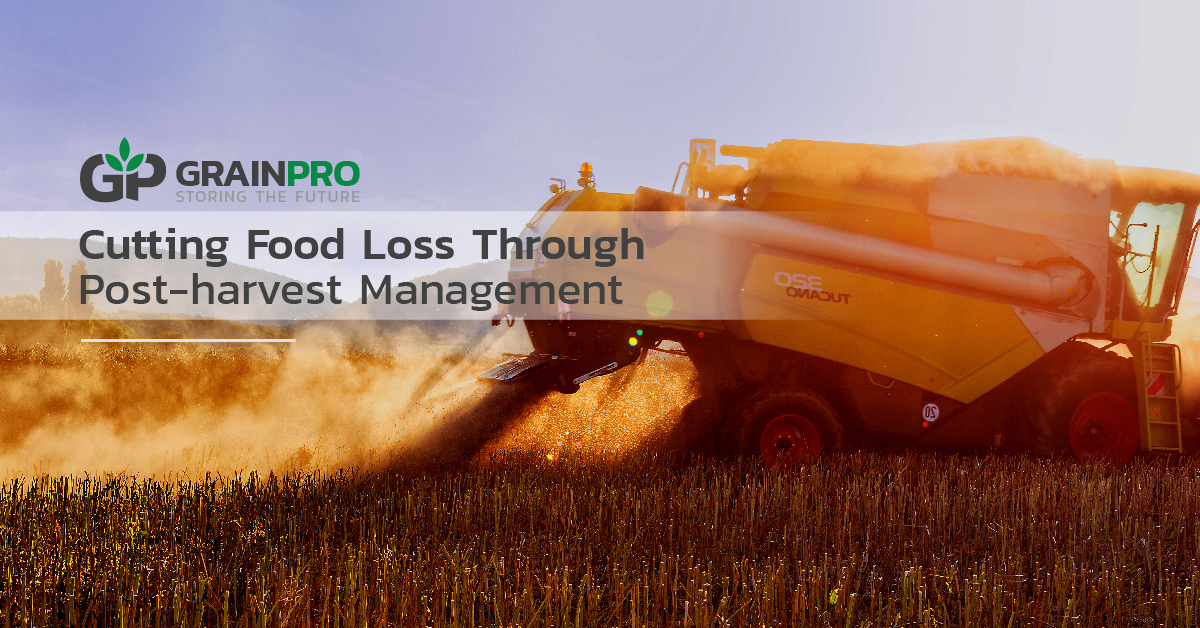Cutting Food Loss Through Post-harvest Management

Food loss affects billions of people worldwide. It contributes to widespread hunger, poverty, and malnutrition, especially in developing countries.
According to the UN Environmental Programme (UNEP), food loss in developing countries happens during the harvest and post-harvest stages of the food chain, tracing back to "financial, managerial and technical constraints in harvesting techniques as well as storage and cooling facilities."
When staple crops like rice, wheat, and maize are handled after harvest, one of the processes they go through is drying. During this step, crops are prone to mold growth that leads to losses. This happens when uneven drying occurs or if the crops are dried improperly, which leaves higher moisture content levels which affects the quality of the dried grain. Because the moisture content is too high, these commodities begin to grow microflora and mold. Food producers and traders are then forced to dispose the contaminated crops, losing income along the way.
Food safety is another concern when crops are poorly dried since microflora and molds are known to contaminate commodities even without traces seen by the naked eye. Studies show that ingestion of mold-contaminated food can lead to adverse health effects both in humans and animals.
To avoid this, farmers and traders should ensure that even and timely drying is utilized. Post-harvest drying can be improved by making sure that crops are dried at the correct rate. Rapid drying may lead to case hardening which traps moisture inside the grains while drying too slowly will allow molds to start growing. Machinery can also aid in even drying. This way, no mold growth can damage the crops.
Related: Reducing Health Risks by Preventing Mold Growth
Crops should also be safely stored to preserve both quality and quantity. Gas-tight and moisture-tight hermetic storage is one of the best options since it can help eliminate mold growth and insect infestations.
Hermetic storage is especially helpful during bumper seasons when farmers end up with far more harvested yield than anticipated. Instead of simply selling the crops at lower price , they can store it until needed without worrying about spoilage from molds or insects. This also ensures that the crops will still be safe for human or animal consumption.
Food loss can also occur during transit due to degradation of quality, spoilage, spillage, and other factors. One of the causes of such loss can be attributed to poor handling. To solve this, food handlers need to use tools that can preserve the crops even during long transit periods. For dry commodities, moisture damage can cause huge losses during transoceanic journeys. Having the right solution for this is crucial to preserve quantity and quality.
Taking the time to improve post-harvest management to reduce food loss can be highly beneficial for food producers, manufacturers, and consumers. Agri-based economies can be boosted while smallholder farmers can earn more. Communities will also have the opportunity to grow and to have better health and nutrition.
Related: Ways to Improve Food Quality Using Post-Harvest Management
Not only that, the pressure on the environment caused by intensive agricultural practices, such as heavy use of chemical pesticides, can slowly be lessened. Greenhouse gas emissions will also be lessened, which can help slow down climate change and global warming while reducing the carbon footprint of food production.
Reducing food loss is possible with the help of innovative post-harvest solutions for storing, drying, and transporting commodities safely. One such solution is the GrainPro Cocoon, which helps preserve bulk-stored grains and other dry commodities for longer periods without compromising safety and quality. For smaller quantities, the GrainPro Bag works well to keep out moisture and lock in aroma, taste, freshness, and overall quality of commodities such as basmati rice, coffee beans, and cocoa beans.
Another is the GrainPro Bubble Dryer, which evenly dries commodities even with erratic weather. The Bubble Dryer can also harness solar energy, effectively decreasing electricity costs. This cost-effective dryer can help preserve the quality of crops all throughout the drying period.
To transport crops safely, the GrainPro TranSafeliner is used as a protective barrier within shipping containers. This solution helps reduce moisture damage and mold growth, keeping the quality and quantity of food intact.
For more information on GrainPro's post-harvest solutions, click the button below.
Related:
To A Sustainable Future: Benefits of Reducing Post-Harvest Losses
